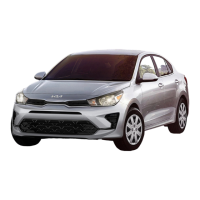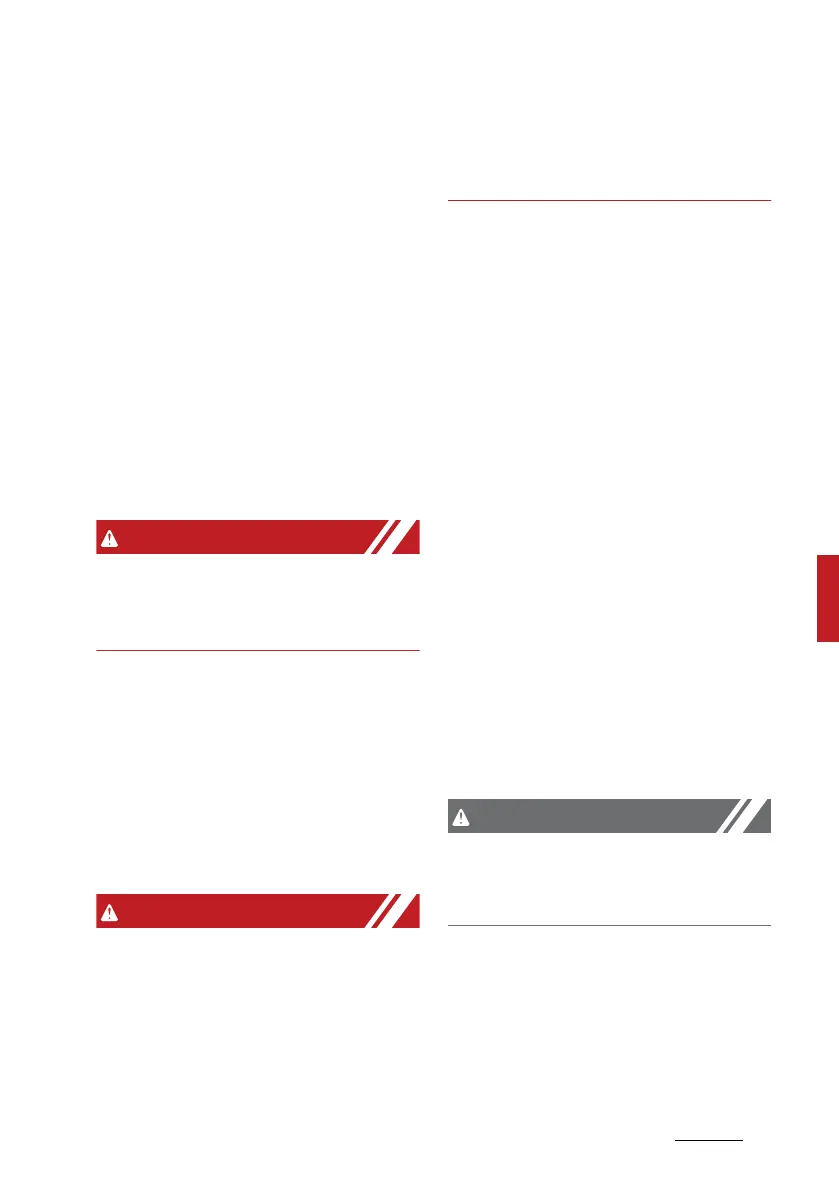171
6
6
Driving your vehicle Special driving conditions
Special driving conditions
Hazardous driving conditions
When hazardous driving conditions
are encountered such as water,
snow, ice, mud, sand, or similar haz
-
ards, follow these suggestions:
䳜 Drive cautiously and allow extra
distance for braking.
䳜 Avoid sudden braking or steering.
䳜 When braking with non-ABS
brakes pump the brake pedal with
a light up-and-down motion until
the vehicle is stopped.
ABS
Do not pump the brake pedal on a
vehicle equipped with ABS.
䳜 If stalled in snow, mud, or sand,
use second gear. Accelerate
slowly to avoid spinning the drive
wheels.
䳜 Use sand, rock salt, tyre chains, or
other non-slip material under the
drive wheels to provide traction
when stalled in ice, snow, or mud.
Down shifting
Down shifting with an Automatic
Transmission/Dual Clutch Transmis
-
sion, whilst driving on slippery sur
-
faces can cause an accident. The
sudden change in tyre speed could
cause the tyres to skid. Be careful
when down shifting on slippery sur
-
faces.
Rocking the vehicle
If it is necessary to rock the vehicle
to free it from snow, sand, or mud,
first turn the steering wheel right
and left to clear the area around
your front wheels. Then, shift back
and forth between 1st (First) and R
(Reverse) in vehicles equipped with a
Manual Transmission/Intelligent
Manual Transmission or R (Reverse)
and any forward gear in vehicles
equipped with an Automatic Trans
-
mission/Dual Clutch Transmission.
Do not race the engine, and spin the
wheels as little as possible. If you
are still stuck after a few tries, have
the vehicle pulled out by a tow vehi
-
cle to avoid engine overheating and
possible damage to the transmis
-
sion.
Prolonged rocking may cause engine
over-heating, transmission damage
or failure, and tyre damage.

